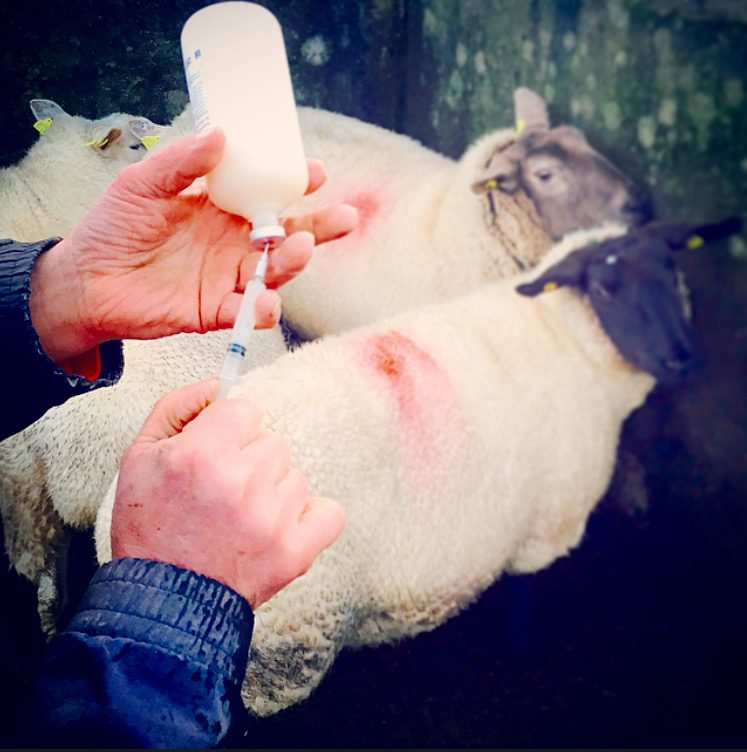Following the announcement of the new National Sheep Welfare Scheme (NSWS), farmers are no doubt identifying what actions they will undertake.
There are four actions in the scheme and applicants must complete two actions in full, one from each category.
The Department of Agriculture, Food and the Marine (DAFM) has confirmed that the payment will be per eligible breeding ewe and payment for full scheme compliance will be €8/ewe, (€4/ewe/action completed).
Category A actions Category B actions 1. Shearing 1. Clostridial vaccination of ewes 2. Body condition scoring (BCS) ewes and appropriate follow-on management (as appropriate) 2. Plunge dipping to control external parasite.
Completion of both actions are mandatory for payment.
Details on carrying out the actions in each category are featured below.
Category A
Action – Shearing:
Farmers in the NSWS who choose this action must carry it out in full by October 15, 2024.
If a farmer knows for whatever reason they cannot meet this deadline, they should choose the alternative category A action.
Documentary evidence of completion of this action will include but not been limited to, completion of the scheme action record sheets, receipts from a shearing contractor and/or evidence of sale of the wool to a wool merchant.

The action must be carried out on the number of breeding ewes selected by the farmer as their payable number at application stage.
Action – Body Condition Scoring ewes and appropriate follow-on management (as appropriate):
The DAFM has said the body condition scoring (BCS) of breeding ewes has been shown to have a significant effect on ewe productivity and the subsequent performance of her lambs.
BCS is a manual check to assess the amount of fat cover and muscle mass which can be scored between 1 (thin) and 5 (fat). Measuring BCS can be carried out by hand and does not require any equipment.
According to the DAFM, having the flock at the correct BCS pre-mating of 3.5 to 4.0 will increase the number of lambs reared per ewe, along with increased prolificacy and reduced barren rates.

condition score Source: DAFM
Farmers that select this action in the NSWS must carry it out twice within the timeframes below and the assessment dates must take place eight weeks apart.
The first BCS assessment must be carried out between April 15 and July 15, 2024.
The second BCS assessment must be carried out between August 1 and October 15, 2024.
The breeding ewes in the flock with a body condition score of 1 or 2 should be separated and given access to preferential feeding such as high-quality grass/forage.
Breeding ewes with a low BCS may need to be housed.
The number of breeding ewes that were identified as thin (1 and 2) should be clearly recorded in the scheme action record sheets along with the dates of the assessments for all breeding ewes.
Category B
Action – Vaccination of ewes against Clostridial diseases +/- Pasteurella:
Clostridial diseases can affect animals at all ages depending on the strain, generally the first noticeable clinical symptom is death.
These diseases, such as lamb dysentery, pulpy kidney, struck, tetanus, braxy, blackleg and black disease can all be fatal to sheep.
Pasteurellosis pneumonia is also a major problem on some farms.
If a farmer selects the vaccination of breeding ewes against Clostridial diseases +/- Pasteurella option, it must be completed by October 15, 2024.

The DAFM has said breeding ewes that have been vaccinated previously should be given an annual vaccination four to six weeks before the expected lambing date to ensure adequate accumulation of protective immunoglobulins in colostrum.
If all or some of your breeding ewes are not currently in receipt of a Clostridial vaccination, you may vaccinate lambs as an alternative, the DAFM advised.
Where you do so, lambs must be vaccinated from three weeks of age and a second booster vaccination must be administered no later than four to six weeks after the first vaccination.
The vaccination must be carried out in accordance with the appropriate instructions as detailed by the manufacturer and all details must be clearly recorded in the scheme action record sheets.
Documentary evidence of completion of this action will include but not been limited to, completion of the scheme action record sheets, receipts for sufficient vaccination for breeding ewes and/or lambs.
The action must be carried out on all lambs of your scheme payable number of breeding ewes selected by the farmer as their payable number at application stage.
Action – Plunge dipping to control external parasites:
Plunge dipping controls scab, ticks, lice, blowfly and keds in sheep. Sheep scab is a major concern for sheep farmers as it has a significant impact on the health, welfare, and productivity of affected animals.
If a farmer selects plunge dipping in this scheme, it must be completed by October 15, 2024.

The DAFM advised plunge dipping should not take place eight weeks prior to lambing.
It added plunge dipping can be carried out on farm where the flock owner has their own plunge dip or by a mobile plunge dipping service operator.
Documentary evidence of completion of this action will include but not been limited to, completion of the scheme action record sheets, receipts from a contractor and/or receipts for the purchase of appropriate dipping material.
The action must be carried out on the number of breeding ewes selected by the farmer as their payable number at application stage.
